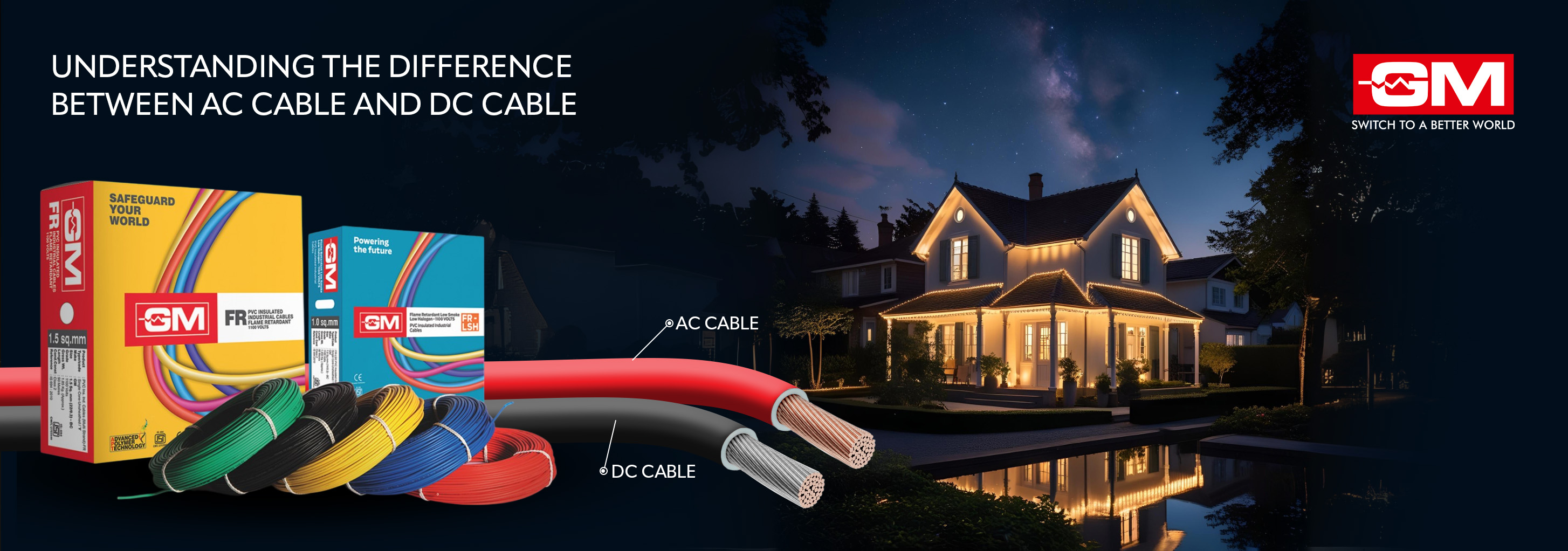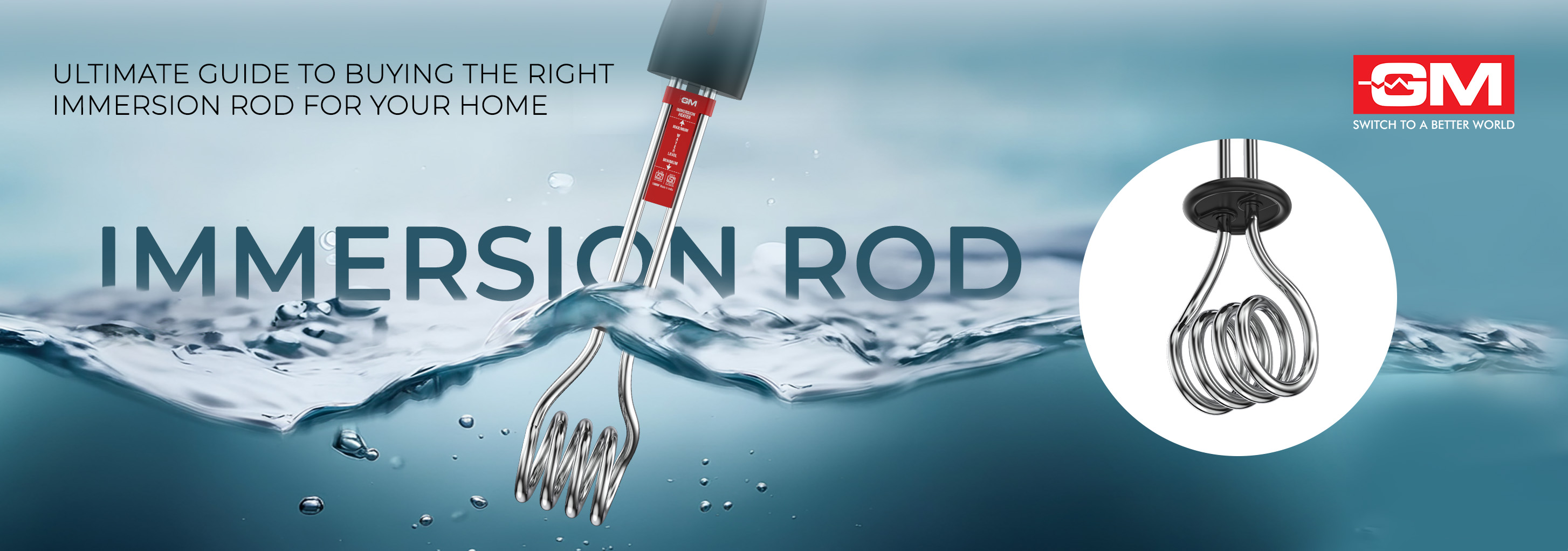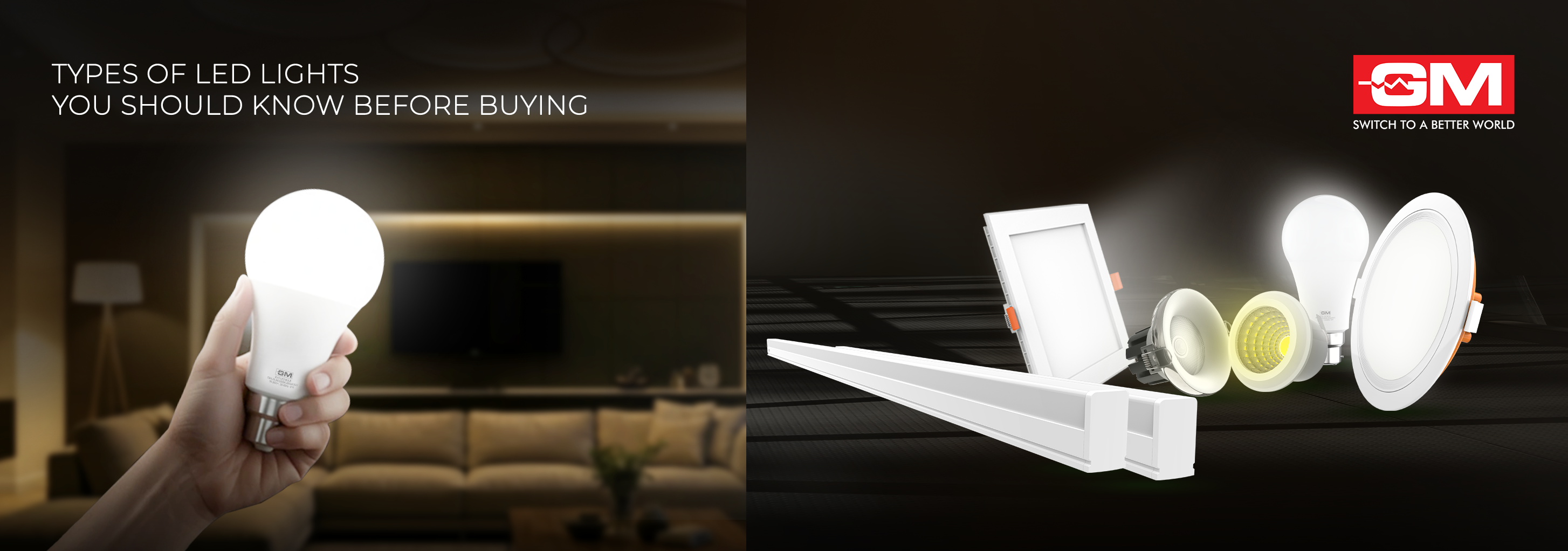Blog
Understanding the Difference Between AC Cable and DC Cable
Updated on Jul 2025

As electrical systems move toward wireless technology, understanding the difference between AC and DC cables is essential. Whether you're wiring your home, installing a solar system, or selecting appliance components, knowing the distinct roles of AC and DC cables is key to safety, efficiency, and long-term performance.
This blog will clarify the difference between AC and DC cables and explain why choosing the right one is important for Indian households.
What Is an AC Cable?
An AC cable (Alternating Current cable) carries electrical current that periodically reverses direction, changing its flow 50 times per second (50 Hz frequency).
These cables are widely used in household wiring, industrial machinery, and power supply systems because they're easier to step down AC power from the electrical grid.
Key Characteristics of AC Cable
Here are some key characteristics of AC cables that make them the preferred choice for electrical power supply:
-
Designed for alternating current
-
Commonly used in homes, offices, and factories
-
Available in various voltage ranges (based on the application)
-
Ideal for wiring fans, lighting, air conditioners, TVs, and more
-
Available with various insulation materials for protection and durability
What Is a DC Cable?
A DC cable carries electricity in one direction, from the source to the destination, without reversing. Unlike AC, it doesn’t change direction. DC cables have a simple design and require minimal insulation.
These cables are commonly used in battery systems, solar setups, electric vehicles, and certain electronic circuits. DC cables are typically thicker to manage constant voltage and handle heat dissipation in low-voltage, high-current applications.
Key Characteristics of DC Cables
-
Carries direct current in a one-way flow
-
Commonly used in solar systems, battery banks, and EV chargers
-
Requires better insulation to prevent arcing
-
Typically has thicker conductors for higher current transfer
-
Often color-coded with red (positive) and black (negative) insulation to indicate polarity
Difference Between AC and DC Cables
Now that we've explained AC and DC cables, let's compare their key differences in the table below.
| Parameter | AC Cable | DC Cable |
| Current Flow | Alternates (changes direction). | Direct (flows in one direction). |
| Transmitting Distance | Ideal for long-distance electrical transmission with minimal energy loss. | Suitable for short-distance power supply with higher energy loss, but not ideal for long-distance transmission. |
| Cable Construction | AC cables have a complex phase structure for improved shielding and stronger insulation due to their alternating current. | Simple design with a focus on high conductivity and effective insulation. |
| Polarity Concern | Insensitive to polarity. | Highly sensitive to polarity. |
| Voltage Range | 110V to 440V (standard range). | 12V to 48V (common in residential solar systems). |
| Heat Dissipation | Lower. | Higher (requires a larger cross-section). |
| Application Areas | Home appliances, lighting, motors, high-voltage transmission lines, commercial power distribution, industrial machinery. | Solar panels, solar-powered systems, batteries, and electronic devices. |
| Advantages | Highly efficient for long-distance power transmission and easily converted to DC using inverters. Voltage levels are highly adjustable. | Simple design, more conductive than AC cables, and easier to install and maintain. Highly energy-efficient for short distances. |
Where Are AC Cables Commonly Used?
AC cables are used across various industries for:
-
Residential electrical wiring
-
Household appliances (TVs, refrigerators, geysers)
-
Lighting systems
-
Commercial electrical systems
-
Fans and air conditioners
Where Are DC Wires Commonly Used?
Although DC cables are used less frequently, they are vital in applications such as:
-
Solar PV installations
-
Battery-powered systems
-
CCTV security systems
-
Electric vehicles (EVs)
-
Inverter connections
Why Choosing the Right Cable Matters
Ignoring the difference between DC and AC wires can affect your appliance’s efficiency, durability, and safety. Here’s why choosing the right cable is crucial:
- Safety Hazards:
Using the wrong cable can lead to overheating, short circuits, or even electrical fires.
- Inefficient Performance:
Undersized DC cables can cause voltage drops, reducing system efficiency.
- Regulatory Compliance:
Electrical setups in India must meet ISI and BIS standards for safe installation.
AC vs DC Wire: Tips for Selecting the Right Cable
Whether you're moving to a new home or upgrading your current one, keep these points in mind when choosing between AC and DC wires:
-
Check the voltage and current rating required for your system.
-
Use color-coded cables for clarity and correct polarity.
-
Ensure flame-retardant insulation for both AC and DC cables.
-
Consult a qualified electrician before installation.
-
Purchase certified cables from trusted brands like GM Modular for safety and quality.
Understanding the difference between AC and DC cables is essential for any electrical setup, from home wiring to solar installations. Each cable type has unique construction, insulation needs, and applications. Using the wrong cable can cause inefficiencies or safety hazards.
GM Modular’s flame- and heat-retardant wires, with advanced insulation and high conductivity, are designed for modern homes and future-proof electrical systems.
Frequently Asked Questions
1. How can I tell if my cable is AC or DC?
DC cables are simple with positive and negative poles. AC cables, however, have a more complex structure, often featuring a 3, 4, or 5-phase wire system for added safety.
2. Where should AC cables not be used?
AC cables shouldn’t be used in wet areas with high moisture or for devices that need a DC supply to function properly.
3. Can I use the same cable for both AC and DC?
It’s not recommended. AC and DC cables have different insulation and conductor specifications, and using the wrong one can be risky.
4. What are DC cables typically used for?
DC cables are used in solar panels, batteries, and electronics that require a steady, unidirectional flow of current.
Related Blogs

Why GM Modular Wires & Cables Are the Smart Choice for Electrical Safety
When it is about electrical installations, wiring is the invisible backbone that supports everything from lighting to appliances, motors to smart home systems. A poor-quality wire can undermine even the best equipment, leading to voltage drops, overh
Read More
Ultimate Guide to Buying the Right Immersion Rod for Your Home
When it comes to quick, affordable, and efficient water heating, few appliances can match the simplicity and effectiveness of an immersion rod. From a chilly winter morning to a last-minute need for warm water, this compact device is one of the most
Read More
Types of LED Lights You Should Know Before Buying
Lighting has come a long way from the days of bulky bulbs and high electricity bills. Today, LED lights have transformed how we illuminate our homes, offices, and outdoor spaces, combining energy efficiency, style, and longevity in one smart package.
Read More
Top GM Modular Fans to Add Comfort & Style This Festive Season
A festive season is more than lights and decorations; it's about creating a warm, welcoming space. As families gather, meals linger, and laughter fills rooms, comfort becomes just as important as looks. Amid all the décor decisions, one o
Read More